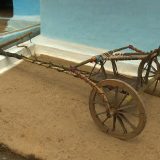Patta ( Bengal Painting )
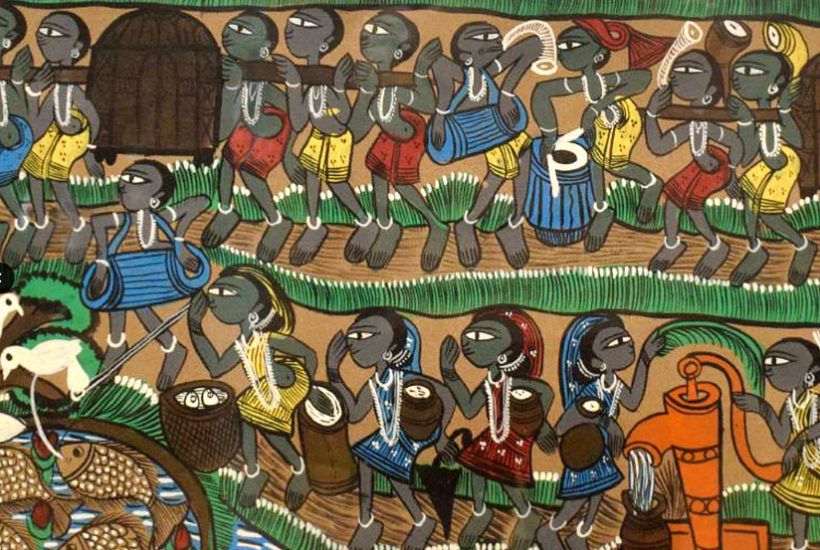
It’s an usual summer afternoon in Pingla. But is it usually this quiet?
Not for long, they said, as they saw a silhouette appearing from the horizon.
As the tinkling of the cycle became louder, so did the merriment of the children.
It was Mr. Pattua with his en-captivating stories, all ready to be unscrolled & recited.
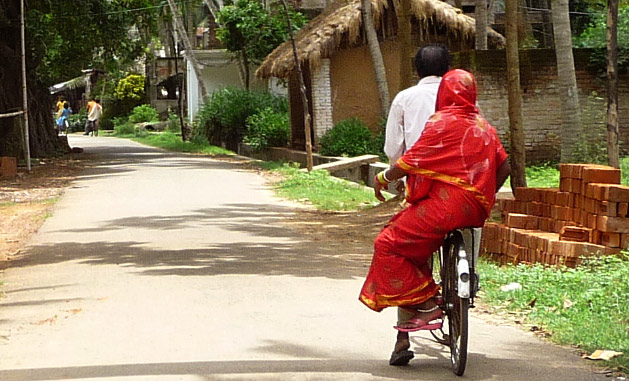
As he sat with folded legs, surrounded by curious children, scrolls of Dighal Patta rolled out to ignite their imagination. What would it be today? Mythology, folklore or another social evil? The age old cloth painting, sourced from the medieval….Turmeric, soot, hingula are all set to reunite & enlight.
Enlightenment and Edutainment, with this insight a Tale is told, with bamboo sticks it unfolds but is never sold. Children of Vishwakarma & Ghritachi; Chitrakar status is what these Pattuas behold. Cursed by Shiva, ostracized from the society, yet they made their mark.
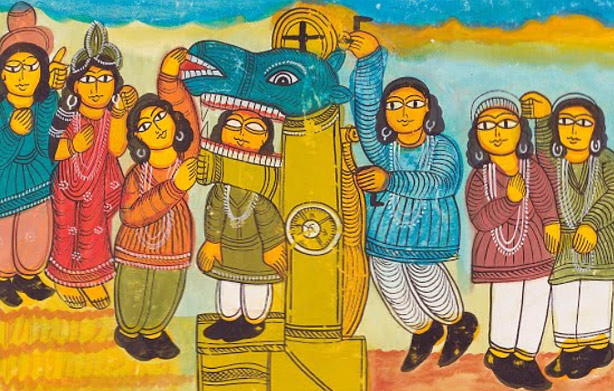
Assisted Chanakya to set the enemy contrite, Depicted images of Yamraj & hell to set the sinners on right. French revolution, plagues and struggles to write… Everything based out of Bengal in sight!
New age media makes storytelling widespread and mobile , Collective consciousness is at stake to realize and rise. Are the livelihoods of Pattuas about to institutionalize… Innovation in design is required to help the indigenous art of Pattachitra reach a new height.
Pattuas are a vibrant artisan community of storytellers, found mainly in the states of West Bengal, Bihar, Jharkhand, and Odisha, that use a scrolled painting with large frames called Pattachitra to narrate and sing the stories of mythology, social evils & local folklore of yesteryear as a form of edutainment.
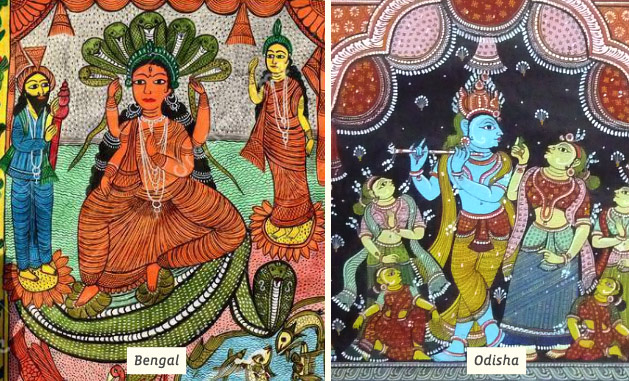
Pattachitra is an ancient art of visual mobile storytelling, hailing from Bengal in India. The name Pattachitra has evolved from the Sanskrit word ‘patta’, meaning cloth, and ‘chitra’, meaning picture. This art form is believed to have originated as early as the 12th century and is one of the oldest and most famous living art forms.
It takes precision and skill, mastered by the Patua over many years, to perfect the Pattachitra which is painted using indigenous paints made by the painters using gum from the wood apple tree as a base and mixing locally-found ingredients for pigments, such as turmeric for yellow and lamp soot for black.

There are two varieties of Pattachitra.
a) Ekachitra : containing many small chaukas or square pattas with only one continuous Story.
b) Dighal patta : containing numerous paintings depicting an intricately interwoven story,
consisting of many parts. Since the Dighal Patta is rolled up, it is also known as Rolled up or Jarano patta. The patuas sing while showing the Dighalpat.
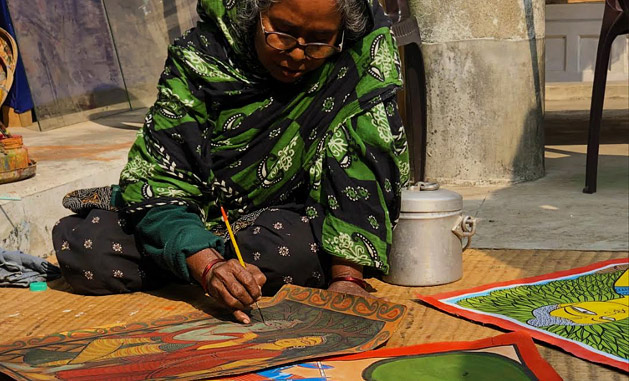
At either end of the Dighal Pat, bamboo sticks are fixed and the scroll is rolled up from the lower stick. The upper stick protrudes out from the top of the first picture. In the districts of Birbhum and Burdwan, the patta is kept on a bamboo stool during exhibition. But in other districts, the Patua holds the upper stick and then gradually opens out the scroll, revealing the pictures serially. Simultaneously, he points at the painting with his right hand, to describe the theme and tells the story. Then he folds the scroll downwards. This process goes on till he ends. The length of the Jodano differs depending on the story with some even going on as long as twenty feet.
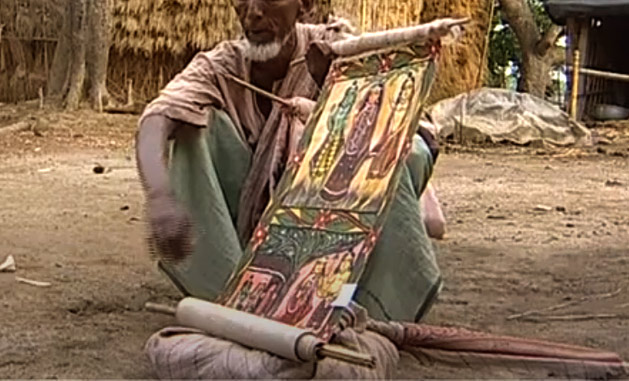
The ends are strung onto thick bamboo sticks which enable the entire scroll to be wrapped effectively while holding the form and structure together. When the performance begins the scroll is unveiled frame by frame as the tale is told, alongside audiences get vivid visual imagery through the song called ‘Patar Gaan’ which is not accompanied by any musical instrument.
Jodano pata’s would never be sold, but in fact, passed down through generations, carrying on the traditions and family profession, while the Chouka Pata was sold for religious purposes. What makes the community of Patuas most unique is their fluid religious identities. Most of the surviving artists in West Bengal today are Muslims. Thus every pattua has two names- one Hindu and another Muslim. The Hindu name is the professional name with which they are known as artists while their real name is Muslim, and they all use Patua as their last name.
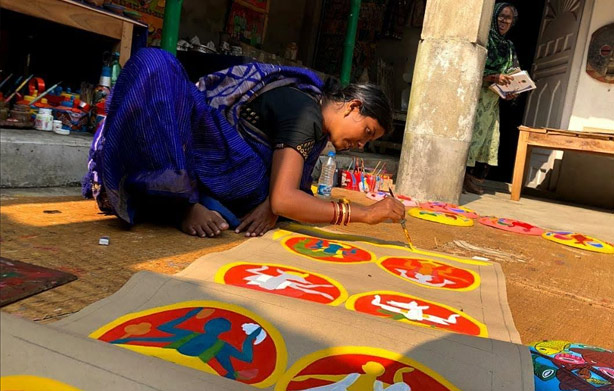
According to the local legend, the Patuas claim to have descended as a class belonging to ‘Chitrakara’, who had taken birth from celestial parents – the celestial artist, Vishwakarma and the celestial dancer, Ghritachi. But they were ostracised from the society. As the legend goes An ancestor of the present day Patuas once drew the portrait of Shiva without seeking his permission. After drawing the portrait, the artist was very afraid as to what would happen, if the Lord would get angry with him. Incidentally, Mahadeva appeared. The painter hid the paint brush inside his mouth. Mahadeva got angry and said that Patua could have thrown it away instead of making it unclean. Then Mahadeva imprecated that from then on, the Patuas would neither be Hindus nor Muslims. They would have to perform Muslim rites and work like the Hindus i.e. they would draw pictures and read or sing. So the Patuas now go to Mosques like Muslims and draw pictures of Hindu deities, sculpt out their images and sing songs of Hindu deities on the scrolls they draw.
Historical sources tell us that Pattachitra was not only used for edutainment but Pattuas also assisted Chankya as secret emissaries to collect information about his enemies and transmit it in the form of Pattachitra paintings. Also, various forms of Yamraj (God of Death) and sights of hell were actively drawn on Pattachitra scrolls to refrain people from committing sins and to control crimes.
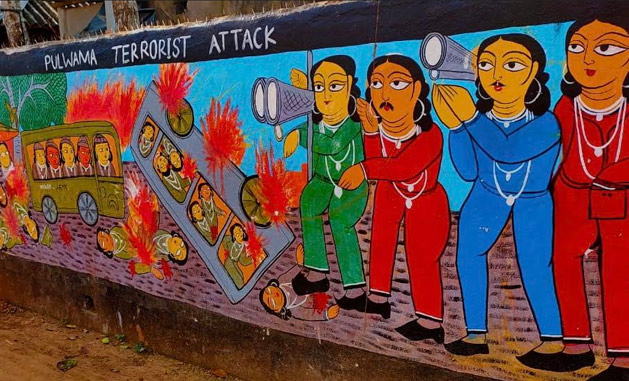
In recent times, Pattachitra is used to depict and spread awareness about recent historical events like The French Revolution, World Wars, Bengal Plagues, Freedom Struggle among others. But the most interesting point to observe here is that all the characters of these images have Bengali physical features and it looks as if all these stories were based out of Bengal.
Bengal’s Pattachitras are brimful with humor, emotion and natural spontaneity. Painting and storytelling are the sole source of livelihood for the Pattua community. Their role as entertainers and social reformers has declined though, since the introduction of new age digital media.
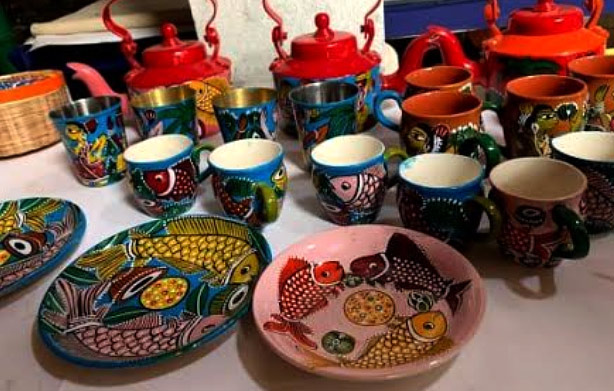
Pattchitra is a vibrant storytelling art form which is on the verge of extinction today. Various efforts are being conducted by several organisations to safeguard the art from with design interventions and painting on innovative canvas. Along with safeguarding the livelihood of Pattuas, it is the need of the hour to identify the importance of stories and storytelling to shape up a healthy and diverse society with collectively rising consciousness.
~
Images by ~ Enactus, St. Xavier’s College, Kolkata


